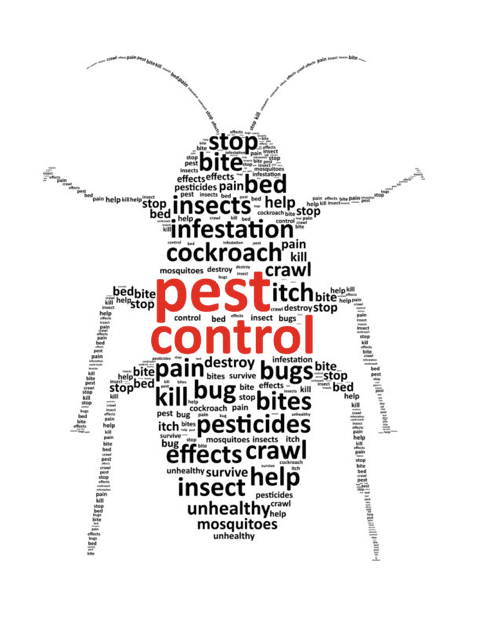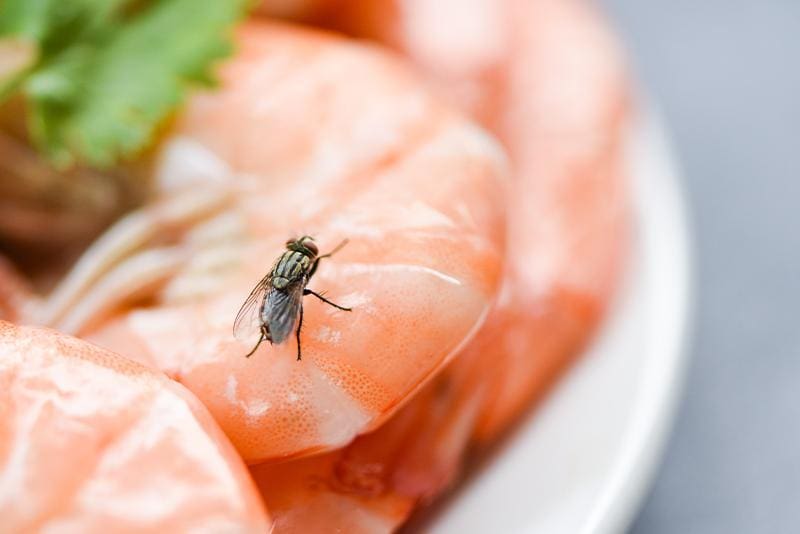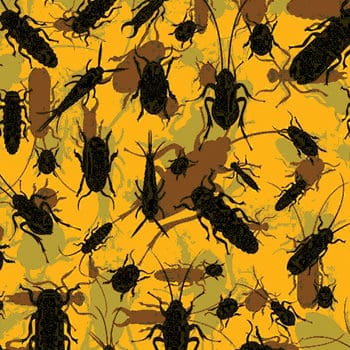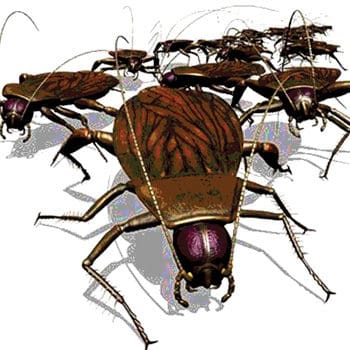Have you ever wondered about the impact that pests can have on food safety? In this article, we will explore this topic in detail and discuss the potential risks and consequences that pests can pose to the safety and quality of our food. From contamination to the spread of diseases, pests can have a significant impact on the food we consume. By understanding these risks, we can better appreciate the importance of implementing effective pest control measures to ensure the safety of our food supply. So let’s dive into the world of pests and their impact on food safety.

Introduction
Welcome to our comprehensive article on the impact of pests on food safety. In this article, we will delve into the various ways in which pests can contaminate food products, the health risks associated with such contamination, and the economic losses incurred by the agricultural sector and food industry. We will also explore the occurrence of foodborne illness outbreaks caused by pests, the importance of prevention measures, and the role of government regulations in ensuring food safety. Additionally, we will discuss the impact of pest-related incidents on consumer trust, the legal implications for businesses, and the steps that can be taken to rebuild trust and prevent food safety lawsuits. Let’s explore this important topic together!
1. Contamination of Food Products
1.1. Introduction to Food Contamination
Food contamination refers to the presence of harmful substances or organisms in food, making it unsafe for consumption. Pests play a significant role in food contamination, as they can introduce various contaminants into food products during harvesting, production, transportation, and storage processes. It is important to understand the different types of contaminants and the specific risks associated with pest-related contamination.
1.2. Types of Contaminants
Pest-related contaminants can take various forms, including physical, chemical, and biological contaminants. Physical contaminants may include insects, rodent droppings, hair, or debris. Chemical contaminants can originate from pesticides or cleaning agents used in food processing facilities. Biological contaminants mainly consist of pathogens, such as bacteria, viruses, or parasites, which can cause foodborne illnesses.
1.3. Common Pest-Related Contaminants
Pests commonly associated with food contamination include rodents, flies, cockroaches, and stored product insects. Rodents are known carriers of diseases and can contaminate food with their droppings, urine, or hair. Flies, which are attracted to decaying organic matter, can transmit pathogens from unsanitary environments to food products. Cockroaches are notorious for carrying bacteria and can contaminate surfaces and food with their feces. Stored product insects, such as beetles and moths, infest stored grains and other dry food products, leading to loss and contamination.
2. Health Risks
2.1. Potential Diseases Transmitted by Pests
Pests can transmit a wide range of diseases to humans through direct contact or contamination of food and surfaces. Rodents are associated with diseases such as leptospirosis, hantavirus, and salmonellosis. Flies can carry pathogens that cause diseases like diarrhea, dysentery, and cholera. Cockroaches are linked to the transmission of Salmonella, E. coli, and various other bacteria. Additionally, stored product insects can cause allergies and respiratory problems in susceptible individuals.
2.2. Symptoms and Health Effects
The symptoms and health effects of foodborne illnesses caused by pests can vary depending on the type of contaminant and the individual’s susceptibility. Common symptoms include nausea, vomiting, diarrhea, abdominal pain, fever, and in severe cases, organ failure or death. Vulnerable populations, such as the elderly, pregnant women, young children, and individuals with compromised immune systems, are particularly susceptible to the adverse effects of foodborne illnesses.
2.3. Vulnerable Populations
Certain populations are more vulnerable to the health risks associated with pest-related contamination. This includes the elderly, whose immune systems may be weakened, making them more susceptible to infections. Pregnant women need to be especially cautious, as certain foodborne illnesses can harm the fetus. Young children, whose immune systems are still developing, are at a higher risk as well. It is crucial to protect these vulnerable populations by implementing effective pest control measures and ensuring food safety.
3. Economic Losses
3.1. Impact on Agricultural Sector
Pest infestations can have a severe impact on the agricultural sector, leading to significant economic losses. Pests can damage crops, reducing yield and quality. Additionally, pests may feed on or destroy plant structures, causing physical damage that affects the nutritional value and marketability of the produce. In some cases, entire harvests may need to be discarded due to pest-related contamination, resulting in substantial financial losses for farmers.
3.2. Damage to Stored Food Products
Pests pose a significant threat to stored food products, including grains, cereals, and other dry goods. Infestations by insects or rodents can lead to spoilage, contamination, and reduced shelf life of these products. This can result in financial losses for food processors, distributors, and retailers, as they may need to discard contaminated products or sell them at significantly reduced prices. The damage caused by pests to stored food products can be extensive and financially detrimental to businesses.
3.3. Costs of Pest Control and Prevention
The costs associated with pest control and prevention measures can be substantial. Businesses in the food industry must invest in regular inspections, treatments, and maintenance to ensure a pest-free environment. This includes the use of pest control professionals, who specialize in identifying and eliminating pests and implementing preventive measures. Additionally, implementing infrastructure upgrades, such as sealing gaps and cracks, installing pest-proof storage containers, and implementing integrated pest management (IPM) strategies, require financial investment. However, these costs are necessary to protect food products and prevent contamination.

4. Foodborne Illness Outbreaks
4.1. Pest-Related Foodborne Illness Outbreaks
Pest-related foodborne illness outbreaks occur when contaminated food products enter the market and are consumed by individuals, resulting in widespread illness. Pests can introduce pathogens into food products, leading to infections when ingested. These outbreaks can be traced back to various points in the supply chain, including production facilities, processing plants, transportation vehicles, and retail establishments. Effective pest control measures are essential to prevent such outbreaks and protect public health.
4.2. Impact on Public Health
Foodborne illness outbreaks caused by pest-related contamination can have a significant impact on public health. These outbreaks can result in a large number of individuals falling ill, requiring medical attention, and potentially leading to hospitalizations. The physical and financial burden on affected individuals and healthcare systems can be significant. Moreover, outbreaks caused by pests can damage the reputation of the food industry, eroding public trust and confidence in food safety.
4.3. Legal and Financial Consequences
Pest-related foodborne illness outbreaks can also have legal and financial consequences for businesses. In addition to potential lawsuits from affected individuals seeking compensation for illness and damages, businesses may face fines and penalties from regulatory authorities for violating food safety regulations. The reputational damage resulting from such incidents can lead to loss of customers and revenue. Therefore, it is imperative for businesses to prioritize pest control and prevention measures to avoid these legal and financial repercussions.
5. Contamination Prevention
5.1. Importance of Pest Prevention
Preventing pest-related contamination in the food industry is crucial to uphold food safety standards and protect public health. Proactive pest prevention measures ensure the integrity and quality of food products, safeguarding consumers from harmful contaminants. Implementing effective pest control strategies can mitigate the risk of contamination, reduce healthcare costs associated with foodborne illnesses, and preserve consumer trust in food safety.
5.2. Best Practices for Pest Control
Implementing best practices for pest control is essential to prevent infestations and protect food products. These practices include regular inspections to detect signs of pests, prompt identification of pest species, proper waste management to eliminate food sources, and effective sanitation measures to maintain a hygienic environment. Additionally, sealing access points, implementing physical barriers, and using insect screens can help prevent entry and establishment of pests in food production and storage areas.
5.3. Integrated Pest Management (IPM) Approach
Integrated Pest Management (IPM) is a holistic approach that combines various pest control methods to effectively manage and prevent pest infestations. It involves the use of multiple strategies, such as monitoring, prevention, cultural controls, biological controls, and targeted pesticide applications. IPM focuses on long-term prevention rather than relying solely on pesticides, minimizing potential risks to human health and the environment. Implementing an IPM approach helps ensure sustainable pest control practices in the food industry.

6. Regulatory Measures
6.1. Government Regulations and Standards
Government regulations and standards play a crucial role in ensuring food safety and preventing pest-related contamination. Food safety regulations vary by country and region but generally include guidelines for pest control, sanitation, storage, transportation, labeling, and product testing. Compliance with these regulations is mandatory for businesses in the food industry to legally operate and provide safe products to consumers. Regular inspections and audits by regulatory agencies help enforce these regulations and uphold food safety standards.
6.2. Food Safety Certifications and Audits
Food safety certifications provide a recognized framework for businesses to demonstrate their commitment to food safety and quality. Certifications such as Hazard Analysis and Critical Control Points (HACCP) and International Organization for Standardization (ISO) standards assure consumers that stringent food safety protocols are in place throughout the production and supply chain. Periodic audits and inspections by certification bodies verify the implementation and effectiveness of these protocols, enhancing consumer trust in food safety.
6.3. Role of Pest Control Professionals
Pest control professionals play a vital role in ensuring food safety by providing specialized knowledge and expertise in pest management. These professionals are trained to identify pest species, assess infestation risks, develop tailored prevention strategies, and implement effective control measures. They work closely with businesses in the food industry to establish comprehensive pest management programs, conduct regular inspections, and provide guidance on best practices. Collaborating with pest control professionals is essential for businesses to meet regulatory requirements and maintain a pest-free environment.
7. Impact on Consumer Trust
7.1. Consumer Perception of Pest-Contaminated Products
The presence of pests in food products significantly impacts consumer trust and perception. Consumers expect the food they purchase to be safe and free from contamination. The discovery of pests or evidence of pest-related contamination can lead to a loss of trust in the brand or product, causing consumers to avoid purchasing or consuming it. Negative experiences and the spread of information through word-of-mouth or social media can tarnish a company’s reputation and have long-lasting effects on consumer trust.
7.2. Rebuilding Consumer Trust
Rebuilding consumer trust after a pest-related incident requires proactive measures from businesses. Transparency and accountability are key in this process. Promptly addressing the issue, taking corrective actions, and communicating openly with consumers about the steps taken to prevent future occurrences can help restore confidence. Implementing robust pest control protocols, obtaining food safety certifications, and engaging in community outreach and education initiatives can also rebuild consumer trust over time.
7.3. Communication and Transparency
Effective communication and transparency are essential in maintaining consumer trust. Businesses in the food industry should have clear and accessible channels for consumers to report concerns or complaints regarding pest-related issues. Prompt responses and open lines of communication demonstrate a commitment to addressing consumer concerns and taking corrective actions. Proactively sharing information about pest control measures, certifications, and audits can also help build trust by showcasing a dedication to food safety.

8. Food Safety Lawsuits
8.1. Legal Implications for Businesses
Pest-related incidents can result in food safety lawsuits, holding businesses accountable for the damages caused by contaminated food products. Lawsuits may be filed by affected individuals seeking compensation for medical expenses, lost wages, pain and suffering, and other damages resulting from foodborne illnesses. Businesses found negligent in preventing pest-related contamination may face legal consequences, including financial liability, reputational damage, and potential closure.
8.2. Notable Food Safety Lawsuit Cases
Several notable food safety lawsuit cases have highlighted the impact of pest-related incidents on businesses. These cases have resulted in significant financial settlements and have served as a wake-up call for the food industry to prioritize pest control and prevention measures. In some instances, companies have faced criminal charges and hefty fines for repeated violations of food safety regulations. The outcome of these cases underscores the importance of proactive measures in preventing pests and ensuring food safety.
8.3. Importance of Proactive Pest Control Measures
The significance of proactive pest control measures cannot be overstated in the food industry. Businesses must prioritize regular inspections, implement comprehensive pest management programs, and train employees in proper sanitation and hygiene practices. Investing in preventive measures is crucial to reduce the risk of pest-related contamination, protect public health, maintain regulatory compliance, and avoid the legal and financial consequences associated with food safety lawsuits.
10. Conclusion
Pests pose a significant threat to food safety, and their impact on the agricultural sector, public health, and consumer trust cannot be ignored. Contamination of food products by pests can lead to the transmission of diseases, economic losses for businesses, and legal liabilities. Preventing pest-related contamination requires a proactive approach, including effective pest control measures, compliance with government regulations, and adherence to food safety certifications. Transparent communication, consumer trust, and the implementation of best practices are vital to safeguarding the integrity and safety of our food supply. By prioritizing pest prevention and mitigation strategies, we can ensure a safer food environment for all.


I am Randy, the author behind PestControld.com. Drawing from decades of experience, I aim to provide valuable insights, expert advice, and practical recommendations to help you make informed decisions when assessing viable pest control solutions.